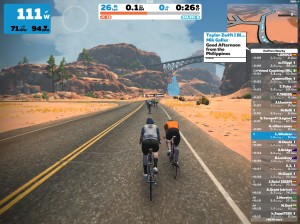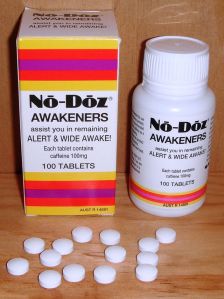 Yesterday I reached 1000 km of riding indoors since the moment I started working from home due to Covid-19 in March. I hadn’t ridden much outdoors since moving to Manchester in early February, and I’ve not only ridden much more than I have in ages, but done most of it in… Zwift. This is a significant change: between 2015 and 2019 I rode only 10 times on the trainer, for a total of 106 km…
Yesterday I reached 1000 km of riding indoors since the moment I started working from home due to Covid-19 in March. I hadn’t ridden much outdoors since moving to Manchester in early February, and I’ve not only ridden much more than I have in ages, but done most of it in… Zwift. This is a significant change: between 2015 and 2019 I rode only 10 times on the trainer, for a total of 106 km…
Paul Fournel, author of Need for the Bike (beautifully republished as Vélo, with illustrations by Jo Burt), and the most unlikely of indoor cyclists, describes two extremes: one his complete bikelessness in Morocco, the other his reaction to the paradoxically bike unfriendly San Francisco. Visiting the latter, Fournel resorts, against type, to ride inside on a static trainer. He won’t go to the gym (I won’t spoil the punchline). I haven’t found the UK lockdown as bike unfriendly he found San Francisco, but I have thus far had no desire to ride outside for pleasure, only utility: to the supermarket with a trailer. To queue.
I couldn’t really afford a smart trainer, but the day after my last day of commuting by train and Brompton for the foreseeable future I ordered a Tacx Flux 2 (more on this later) given my growing realisation that much or all of my cycling is going to be indoors, either because of Covid-19 or because I’m going to be looking after a newborn from late July as well as helping look after my sons post-lockdown.
I fully intended to explore different virtual/augmented reality platforms when it arrived, it after a brief dalliance with Tacx VR I had a go with Zwift, and despite some early confusion found a surprising level of engagement. I’m sure many of you have seen that Black Mirror episode (15 Million Merits), which satirizes the gamification of not just cycling, but life itself), and I for one have been pretty dismissive of virtual cycling and especially virtual racing.
Eurovision + Zwift = #blackmirror
— Cyclisme Spandelles (@spandelles) May 14, 2016
Not entirely dismissive though.
@Lucie84 I see a lot of people using zwift in my strava feed. Looks fun (I haven’t been on the rollers/turbo in months)
— Cyclisme Spandelles (@spandelles) November 17, 2015
And there are other, less judgmental views of the future of a semi-virtualized future for cycling, such as Bruce Sterling’s excellent story Bicycle Repairman.
All you really need to know about the future present of cycling in a short story by Bruce Sterling from 1997. Zwift, gene doping, the lot…
— Cyclisme Spandelles (@spandelles) April 4, 2016
First-hand experience has been enlightening.
Simulation Zwift simulates some aspects of cycling, but others are real. You still sit on a bike. Resistance changes. You get tired. Your butt hurts. You get bored. You can see and interact with others (albeit in an impoverished way)… you can even fall off.
Racing I have only raced my bike once before riding in Zwift in nearly 50 years of cycling. In the last month I have ridden three races, one of which I was DQed from for being to powerful for my entered category (see below under ethics and anti-cheating). My only real life race was over 1700 km long; my longest race in Zwift was 32 km long.
Data I usually ride with cadence and HR sensors and log everything in Strava. In Zwift I get a real, rather than virtual measure of power in W, and crucially W/Kg and 95% 20 minute max power (see below on why this is surprisingly important)… this has been revealing, as it has helped me not overtrain as well as maintain higher work rates when I want/need to.
Power I now have a good idea of my FTP and strengths/weaknesses. I can also see how my HR is not a good measure of effort (but is a good measure of how fatigued I am).
Equipment If you don’t have a smart trainer, HR monitor and a set of scales you won’t be able to race with any sense of real comparison with others. Your desire for such benchmarking may vary. In game purchases (currency = drops) can get you lighter or more aerodynamic virtual frames/wheels, and you can personalise your look. My smart trainer, a mid-range Tacx direct drive model, sounds unwell, is a bit flaky and I fear it’s demise, but I daren’t send it back due to current shortages and transport restrictions.
Heat and wind There is no wind indoors unless you have a fan. If you have one it won’t make you go faster if it is behind you.
Ethics and anti-cheating measures I was canned from my first race in ZwiftPower for being fractionally over the listed W/Kg limit for Category D (calculated for 95% of 20 minute max): this makes even thinking about winning tricky as you need to work just hard enough, but not too hard, or resign yourself to the bottom of the next highest category, as I have done. But unless you register accurately with ZwiftPower it is impossible to tell whether you are winning or losing, and to distinguish between more or less factual representations of effort. There is also ZADA (now CEVAZ). The easiest way to cheat is to under-report your weight. And sandbagging… sigh.
Fitness I am now fitter than I have ever been. And because of isolation, haven’t been ill despite riding nearly every day.
Hills, mountains and dirt It is harder work uphill and on gravel.
Injury Staying in the same position is tough on the body, and I have had reason to switch saddles.
Isolation you are never alone. Unless you want to be. or you get dropped.
Socialisation There are group rides, where the leader has a yellow beacon and the sweep a red one. Some are very organised (AHDR for example, or HERD/PACK), some less so. You can invite other riders to ride socially with you.
Identity and representation Some choose to make their avatar like their real self, some don’t. I shortened my avatar’s beard when I trimmed my real one.
Appearance and reality Just read Baudrillard.
Distance and duration It is possible to ride long distances, but you have to take care of positional issues, and remember to eat and drink. My longest ride was just over 100 km, and it hurt. There are even audaxes (ZHR)…
Efficiency You can find solo or social rides/races 24/7 to suit fitness, training goal and time pressure.
Active and passive You can chat or be silent (using discord or the built-in chat). You can organise, or just participate.
Laziness You don’t need to steer or brake, and if you have a smart trainer, you can freewheel downhill
Fun I have had immense fun.
Epicity If you want it, it is there for the taking. If not. that’s fine too. Or not.
The outdoors It isn’t.







 I tend to avoid fixed, singular goals. I spread risk to mitigate disappointment. A lot of academics find solace in the short term shifting of attention from one priority to another, and become frustrated when they are managed too directly or become unable to do this due to sheer volume of work. Last year I committed to completing a Super Randonneur series – and when I failed to start my 300 I filled the gap with a late-season
I tend to avoid fixed, singular goals. I spread risk to mitigate disappointment. A lot of academics find solace in the short term shifting of attention from one priority to another, and become frustrated when they are managed too directly or become unable to do this due to sheer volume of work. Last year I committed to completing a Super Randonneur series – and when I failed to start my 300 I filled the gap with a late-season 






